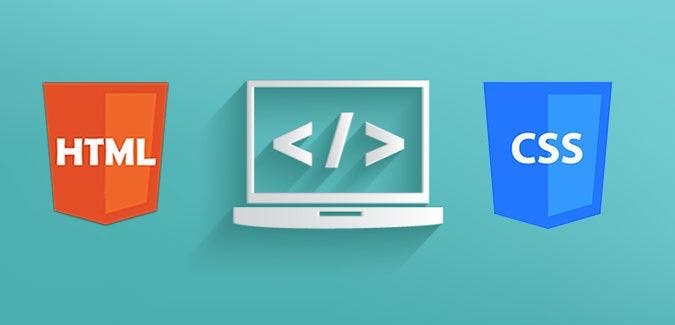HTML Secrets You Should Know
Welcome to the exciting journey of unlocking the hidden gems within HTML! If you’re a web developer or aspiring to become one, you’re in for a treat. HTML (Hypertext Markup Language) is the backbone of every web page, and understanding its secrets can significantly enhance your web development prowess. In this comprehensive guide, we will explore 11 HTML secrets you should know to elevate your coding skills and create captivating web experiences. So, let’s dive right in!
Harnessing the true potential of web development begins with semantic HTML. Rather than using generic div elements for layout purposes, leverage semantic tags like <header>, <nav>, <main>, <article>, <section>, and <footer> to add meaning and structure to your content. This not only enhances accessibility but also aids search engines in understanding your page’s context.
Optimizing Meta Tags for SEO
Meta tags provide crucial information about your web page to search engines and social media platforms. Utilize <title> tags to craft descriptive and concise titles that include your focus keyword, engaging users and improving SEO. Additionally, <meta> tags for description and keywords offer opportunities to enhance your site’s visibility in search results.
Responsive Design with Viewport Meta Tag
In today’s mobile-centric world, responsive design is paramount. The <meta name=”viewport”> tag allows you to control how your web page scales on different devices. Set the viewport width to “device-width” and utilize CSS media queries to ensure your site looks impeccable across various screen sizes.
Structuring Lists for Accessibility
Lists are more than just bullet points; they provide structure and accessibility to your content. Use ordered (<ol>) and unordered (<ul>) lists appropriately, and enhance readability by embedding sub-lists (<li>) within them. Screen readers and assistive technologies can interpret well-structured lists, making your content accessible to all users.
Hyperlink Styling and Behavior
Customizing hyperlink styles adds a touch of uniqueness to your website. Employ CSS to modify link colors, underline styles, and hover effects, ensuring a consistent user experience. Moreover, utilize the “target” attribute to control whether links open in new tabs or the same window, enhancing user navigation.
Embedding Images the Right Way
Images speak volumes on a website, but they need to be embedded correctly. Use the <img> tag with the “alt” attribute to provide descriptive text for screen readers and improve accessibility. To boost performance, optimize images by resizing and compressing them without compromising quality.
Mastering Form Elements
Forms are integral for user interaction, and mastering their HTML elements is essential. Employ semantic elements like <form>, <input>, <textarea>, and <button> to structure and control form elements effectively. Implement proper validation and provide clear error messages to enhance user experience.
Importance of DOCTYPE Declaration
The DOCTYPE declaration is your webpage’s introduction to the browser, informing it which version of HTML to expect. Always include a valid DOCTYPE declaration at the beginning of your HTML document to ensure consistent rendering across different browsers.
Utilizing HTML Entities
Special characters, such as copyright symbols (©) and em dashes (—), can pose challenges when rendered in HTML. Use HTML entities to display these characters correctly across all devices and browsers. For instance, use “©” for © and “—” for —.
Leveraging External Resources
To keep your HTML files clean and enhance efficiency, leverage external resources like CSS stylesheets and JavaScript files. Link to these resources using the <link> and <script> tags, respectively. This practice not only promotes separation of concerns but also facilitates browser caching for faster page loads.
Semantic HTML5 Elements for Multimedia
HTML5 introduced a range of semantic elements to embed multimedia content seamlessly. Utilize <audio> and <video> tags to incorporate audio and video content while providing accessible alternatives for users who cannot access multimedia elements.
FAQs
Are HTML and HTML5 the same thing?
No, they’re not the same. HTML, or Hypertext Markup Language, is the standard for creating web pages. HTML5, on the other hand, is the latest version of HTML, introducing new features and enhancements to improve web development.
Can I use multiple viewports in my web page?
Yes, you can use multiple viewports using media queries. Media queries allow you to apply CSS styles based on different screen sizes, ensuring a responsive design that adapts to various devices.
How can I make my forms more user-friendly?
To make your forms user-friendly, use clear labels, provide placeholders for input fields, offer real-time validation, and display helpful error messages. This ensures a smooth user experience and encourages form submissions.
Why is the “alt” attribute important for images?
The “alt” attribute provides alternative text for images, which is crucial for accessibility. Screen readers use this text to describe images to visually impaired users, ensuring everyone can understand the content.
Is the DOCTYPE declaration mandatory?
Yes, the DOCTYPE declaration is essential. It informs the browser about the version of HTML being used and ensures proper rendering. Without a valid DOCTYPE declaration, your webpage might not display as intended.
Can I embed videos without using YouTube or Vimeo?
Absolutely. You can use the <video> tag to embed videos directly into your web page. This gives you more control over the video and allows you to host it on your server.
Conclusion
Congratulations! You’ve delved into the HTML secrets that can take your web development skills to the next level. By mastering semantic HTML, optimizing meta tags, creating responsive designs, and more, you’re well-equipped to create outstanding web experiences. Remember to experiment, stay updated with industry trends, and never stop learning.
SOURCEBAE: HIRE REACT DEVELOPER





